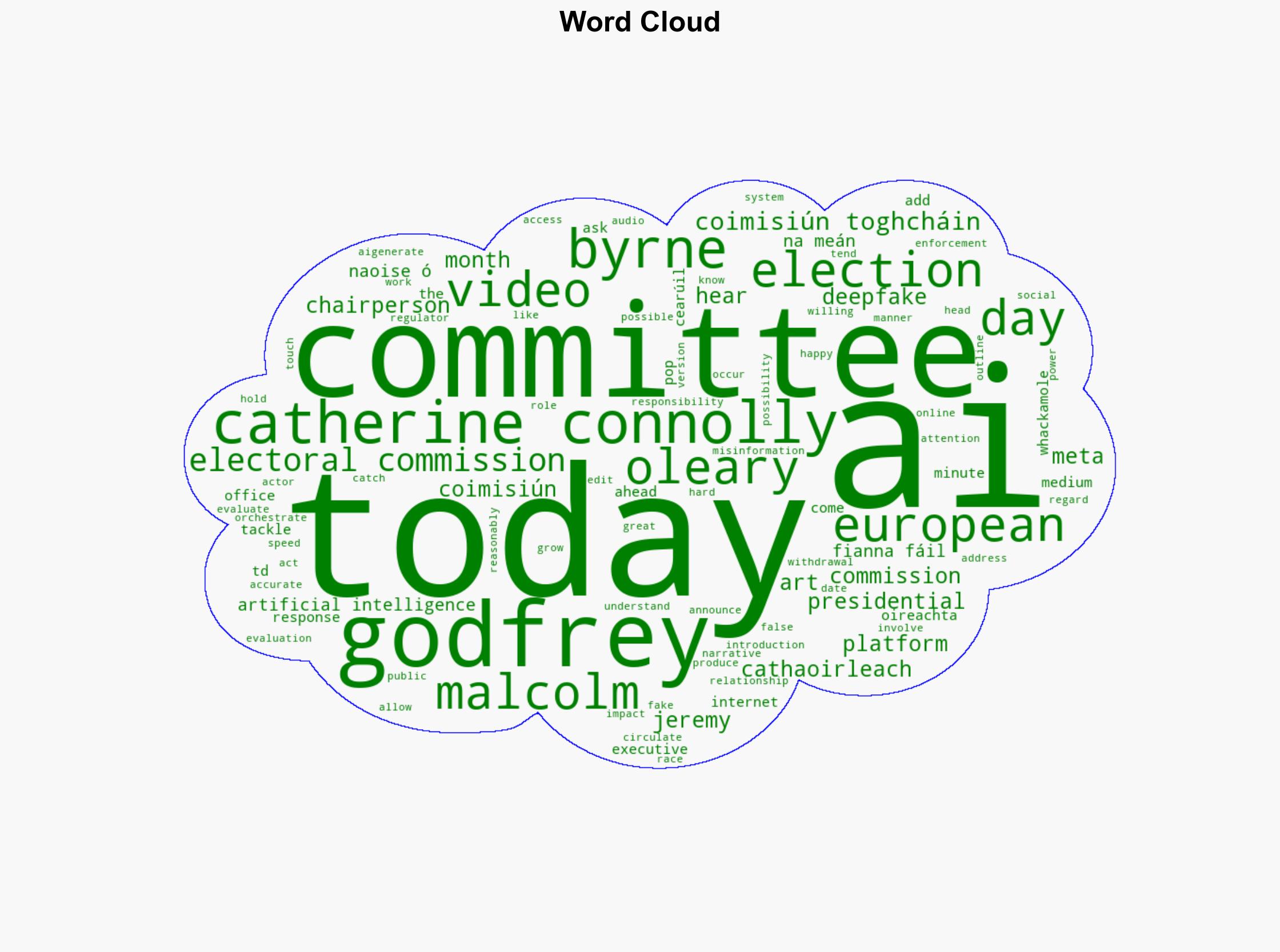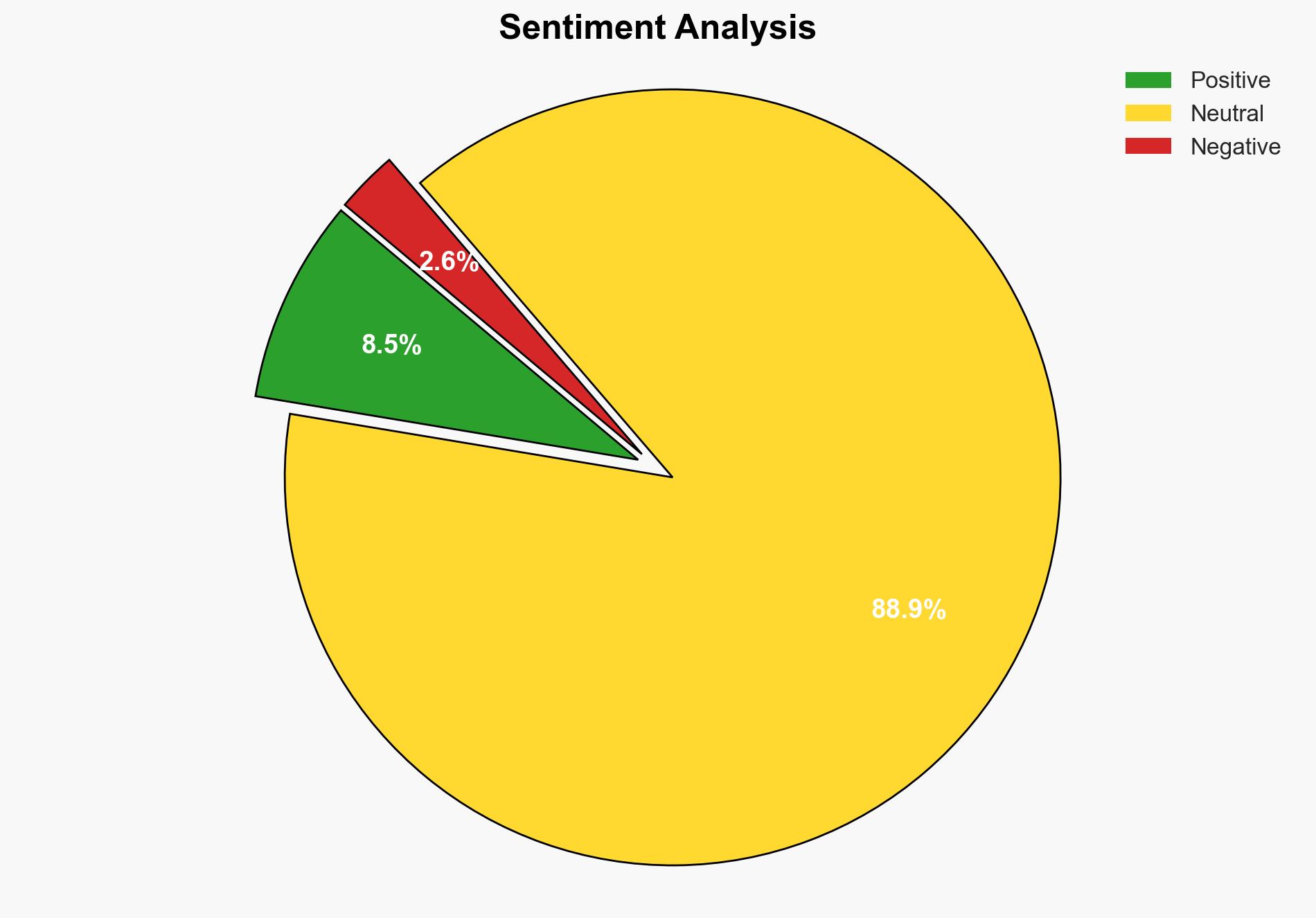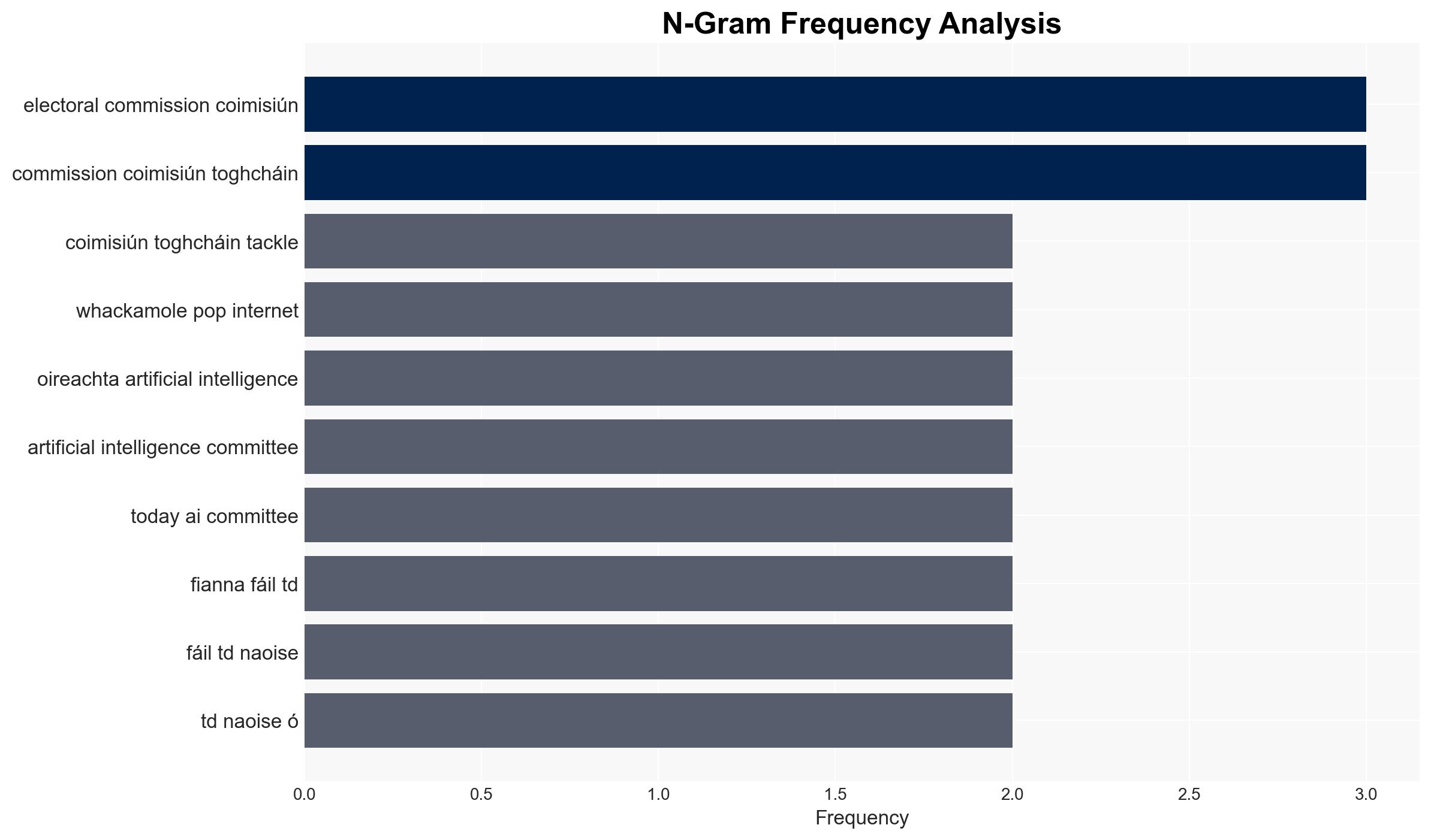Election ‘deepfake’ videos to be discussed by Oireachtas – RTE
Published on: 2025-11-18
AI-powered OSINT brief from verified open sources. Automated NLP signal extraction with human verification. See our Methodology and Why WorldWideWatchers.
Intelligence Report:
1. BLUF (Bottom Line Up Front)
There is a moderate confidence level that the increasing sophistication and dissemination of deepfake videos pose a significant threat to electoral integrity in Ireland. The most supported hypothesis is that these deepfakes are being used as a tool for misinformation to influence public opinion and disrupt electoral processes. It is recommended that the Oireachtas and relevant regulatory bodies enhance monitoring and response capabilities to mitigate these risks.
2. Competing Hypotheses
Hypothesis 1: Deepfake videos are primarily being used by malicious actors to influence electoral outcomes by spreading misinformation and creating confusion among voters.
Hypothesis 2: The emergence of deepfake videos is largely opportunistic, driven by technological advancements and not necessarily coordinated by actors with specific political agendas.
Hypothesis 1 is more likely given the context of recent elections and the strategic advantage misinformation provides to certain groups. The timing of the deepfake emergence around election periods supports this hypothesis.
3. Key Assumptions and Red Flags
Assumptions: It is assumed that the actors behind deepfakes have the technical capability and intent to influence elections. It is also assumed that the current regulatory framework is insufficient to fully address this threat.
Red Flags: The rapid proliferation of deepfakes during election periods and the involvement of known political figures in these videos suggest coordinated efforts. The lack of immediate and effective countermeasures by platforms is a concern.
4. Implications and Strategic Risks
The use of deepfakes could lead to a loss of public trust in the electoral process, potentially resulting in decreased voter turnout and increased political polarization. There is a risk of escalation if foreign actors are found to be involved, leading to potential diplomatic tensions. Economically, the need for increased cybersecurity measures could strain public resources.
5. Recommendations and Outlook
- Enhance collaboration between government bodies, tech companies, and international partners to develop real-time detection and response systems for deepfakes.
- Conduct public awareness campaigns to educate voters about the potential for misinformation through deepfakes.
- Best-case scenario: Effective countermeasures are implemented, minimizing the impact of deepfakes on elections.
- Worst-case scenario: Deepfakes significantly disrupt electoral processes, leading to contested results and civil unrest.
- Most-likely scenario: Incremental improvements in detection and response reduce but do not eliminate the threat of deepfakes.
6. Key Individuals and Entities
Catherine Connolly, Art O’Leary, Naoise Ó Cearúil, Jeremy Godfrey, Malcolm Byrne.
7. Thematic Tags
Structured Analytic Techniques Applied
- Adversarial Threat Simulation: Model and simulate actions of cyber adversaries to anticipate vulnerabilities and improve resilience.
- Indicators Development: Detect and monitor behavioral or technical anomalies across systems for early threat detection.
- Bayesian Scenario Modeling: Quantify uncertainty and predict cyberattack pathways using probabilistic inference.
Explore more:
Cybersecurity Briefs ·
Daily Summary ·
Support us
·





